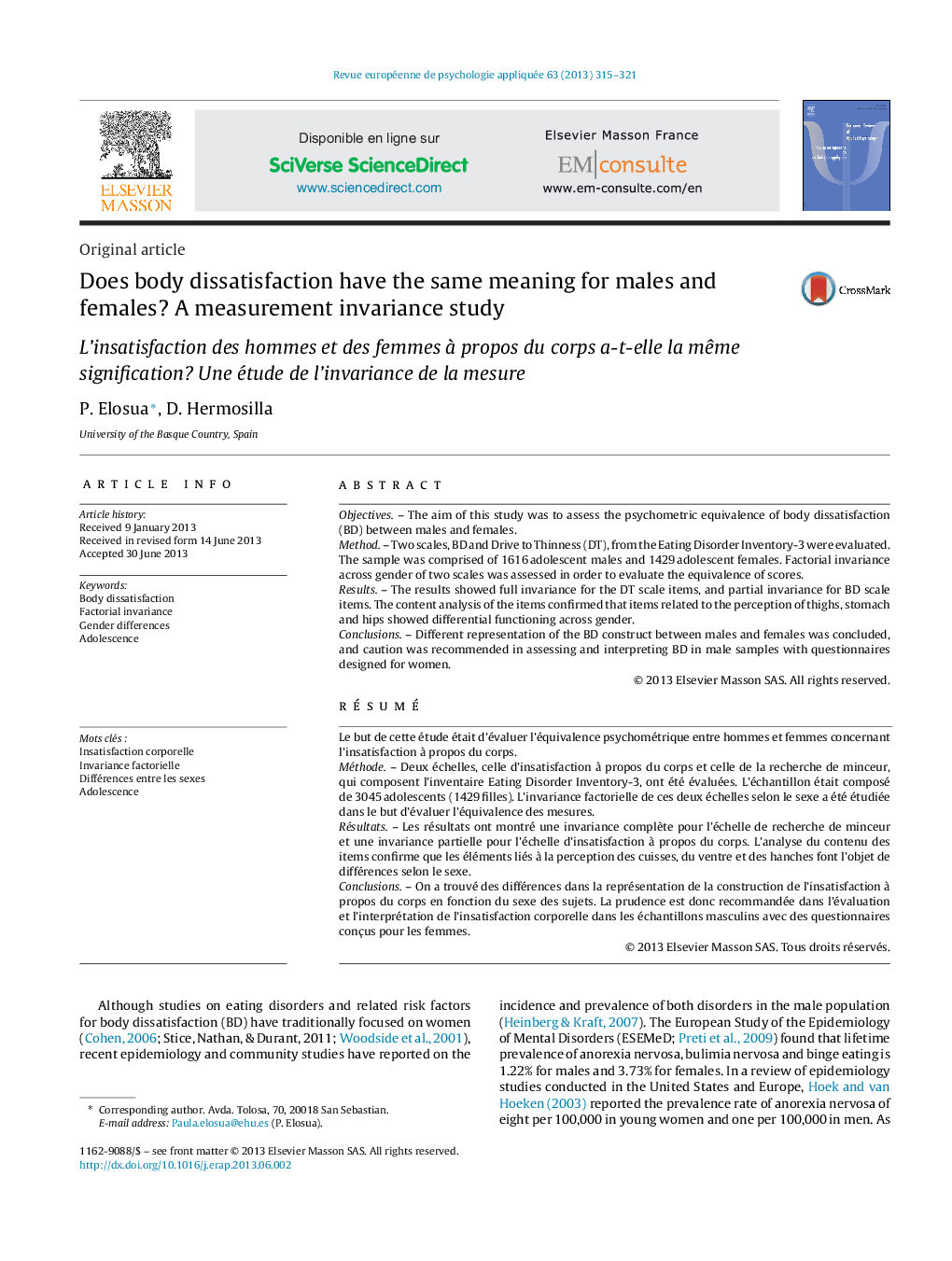ترجمه فارسی عنوان مقاله
آیا نارضایتی از بدن دارای معانی مشابه برای مردان و زنان است؟ مطالعه ناپذیری اندازه گیری
عنوان انگلیسی
Does body dissatisfaction have the same meaning for males and females? A measurement invariance study
| کد مقاله | سال انتشار | تعداد صفحات مقاله انگلیسی |
|---|---|---|
| 36414 | 2013 | 7 صفحه PDF |
منبع

Publisher : Elsevier - Science Direct (الزویر - ساینس دایرکت)
Journal : European Review of Applied Psychology, Volume 63, Issue 5, September 2013, Pages 315–321
ترجمه کلمات کلیدی
نارضایتی از بدن - تغییر ناپذیری عاملی - تفاوت های جنسیتی - بلوغ
کلمات کلیدی انگلیسی
Body dissatisfaction; Factorial invariance; Gender differences; Adolescence

